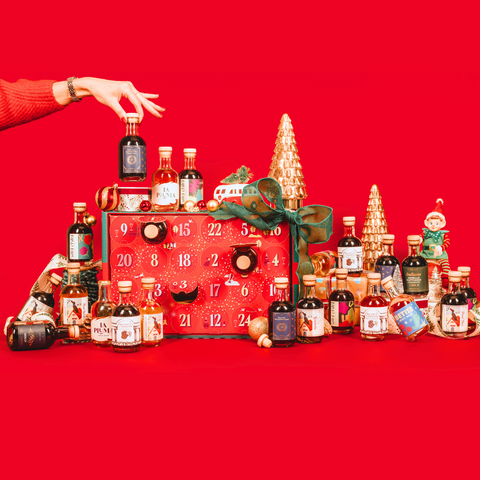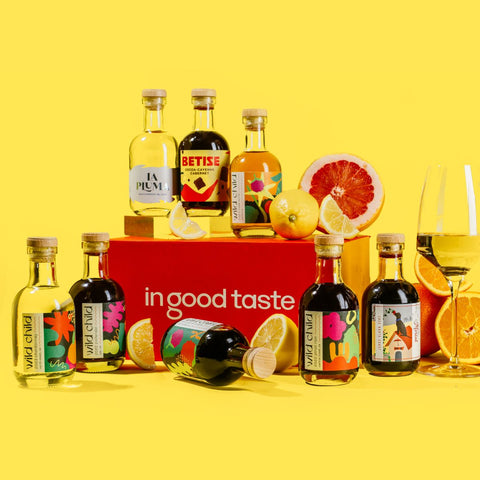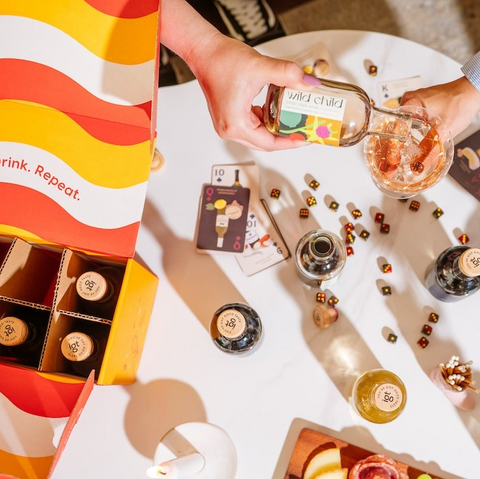A True Taste of Italy
Ciao! Let’s take a trip to experience the beautiful sights and incredible history in Tuscany, Italy. Are you ready? This is going to be an incredible adventure. Grab your passport and pack your bags, because we’ve got a flight to catch!
Oh, wait, so you mean it’s a little bit too last minute to just hop on a plane to travel halfway around the world to Italy? That’s understandable, we got a little carried away. Luckily, we’ve got an alternative that will transport your taste buds and senses to the Tuscan countryside, and you don’t even need a passport to get there. Instead, simply pour yourself a glass of the bonafide classic in Italian wine – Chianti.
History and Origin of Chianti
Chianti has been around for a long time, and we mean a very long time – nearly 700 years. The earliest record of Chianti can be traced back to the year 1398 in documents that note it as a white wine. Similar documents from the time period later note it as a red wine, which is more in line with a modern-day Chianti. It became widely recognized as a red wine by the 18th century.

In 1716, Chianti became one of the world’s first legally defined wine zones (other wine zones include those such as Champagne, Prosecco, and Cava). It was in this year that the Tuscan grand duke Cosimo III declared that the land centered on the townships of Gaiole, Radda, Castellina, and Greve would be the official production area for wines called Chianti. Today, this specific region is home to a designation of Chianti known as Chianti Classico DOCG (Denominazione di Origine Controllata e Garantita), which produces some of the highest quality Chianti. Chianti Classico is known for being branded with a black rooster, or gallo negro. On the shelf look for bottles with the rooster and DOCG labeling.

Beyond Chianti Classico, modern-day Chianti has a larger production region than the one first defined by our dear friend Cosimo III over 300 years ago. There are seven sub-zones within the Chianti DOCG region, which is a different classification entirely from Chianti Classico DOCG. These sub-zones include:
-
Chianti Colli Aretini
-
Chianti Colli Fiorentini
-
Chianti Colli Senesi
-
Chianti Colline Pisane
-
Chianti Montalbano
-
Chianti Montespertoli
-
Chianti Rufina
Each Chianti sub-region has slightly different requirements for production, resulting in distinct aromas and flavors between each zone’s version of this Italian classic.
You may recognize Chianti in stores by its signature bottle, the “fiasco”. Don’t worry, it’s not quite as chaotic as it sounds. This is a flask-shaped bottle that is usually packaged in a straw basket. Although modern Chiantis are often packaged in standard wine bottles, historically, the straw-basketed fiasco was a tell-tale sign that the wine inside was a Chianti.
How Chianti is Made
At the base of every Chianti is the beloved Sangiovese grape. For a Chianti to meet legal requirements in Italy, it must be made with at least an 80% blend of Sangiovese, with some iterations being 100% Sangiovese. If the Chianti is a blend, other varietals that might make it into the mix include Canaiolo, Colorino, Cabernet Sauvignon, and Merlot. Typically, depending on the region and classification of the Chianti, the wine is then aged in barrels anywhere from 6 months to 2.5 years.

How to Serve Chianti
To fully experience the full range of aromas in your Chianti, serve at room temperature (think castle room temp – we often drink our reds too warm, but 55-60 degrees is optimal serving temp). If you’re not already storing your wines in a wine fridge, you can simply place your reds in the kitchen fridge for 20-30 minutes before serving. Enjoy served in a red wine glass, which features a wide bowl that gives the wine a chance to breathe and enhance. This allows each nuanced note and complex aroma to shine, giving you the ultimate taste of this Italian classic.

When choosing dishes to serve with your Chianti, the tried and true saying “if it grows together, it goes together” is a good rule of thumb. Notably, Italian dishes that feature tomatoes pair especially well with a nice Chianti. Fresh pasta with a rich, tomato-based sauce, Margherita pizzas, and savory charcuterie boards all make for excellent companions to let the aromas of your Chianti shine through. However, it is worth noting that Chianti is a very food-friendly wine that gets along with many different dishes. If you’re on the hunt for an exceptional red wine to pair with your favorite dish, consider Chianti your new go-to!
See, Smell, and Taste Notes
With Chianti being primarily made from Sangiovese, a thin-skinned grape, it tends to be slightly translucent and light in color. Chiantis are known for their bright, ruby red color. Aged Chiantis will have hints of rust, auburn, and orange as well.

Chianti is light-bodied with a uniquely savory flavor, notable tannins, and a fair amount of acidity. Common tasting notes associated with Chianti include tart cherries, balsamic vinegar, dried herbs, smoke, and game.
Chianti is an absolute classic that embodies all that is good in Italian and Old World wines. If you’re looking for a delicious wine to pair with an incredible pasta while also expanding your palate, look no further than the time-tested flavors of Chianti!











